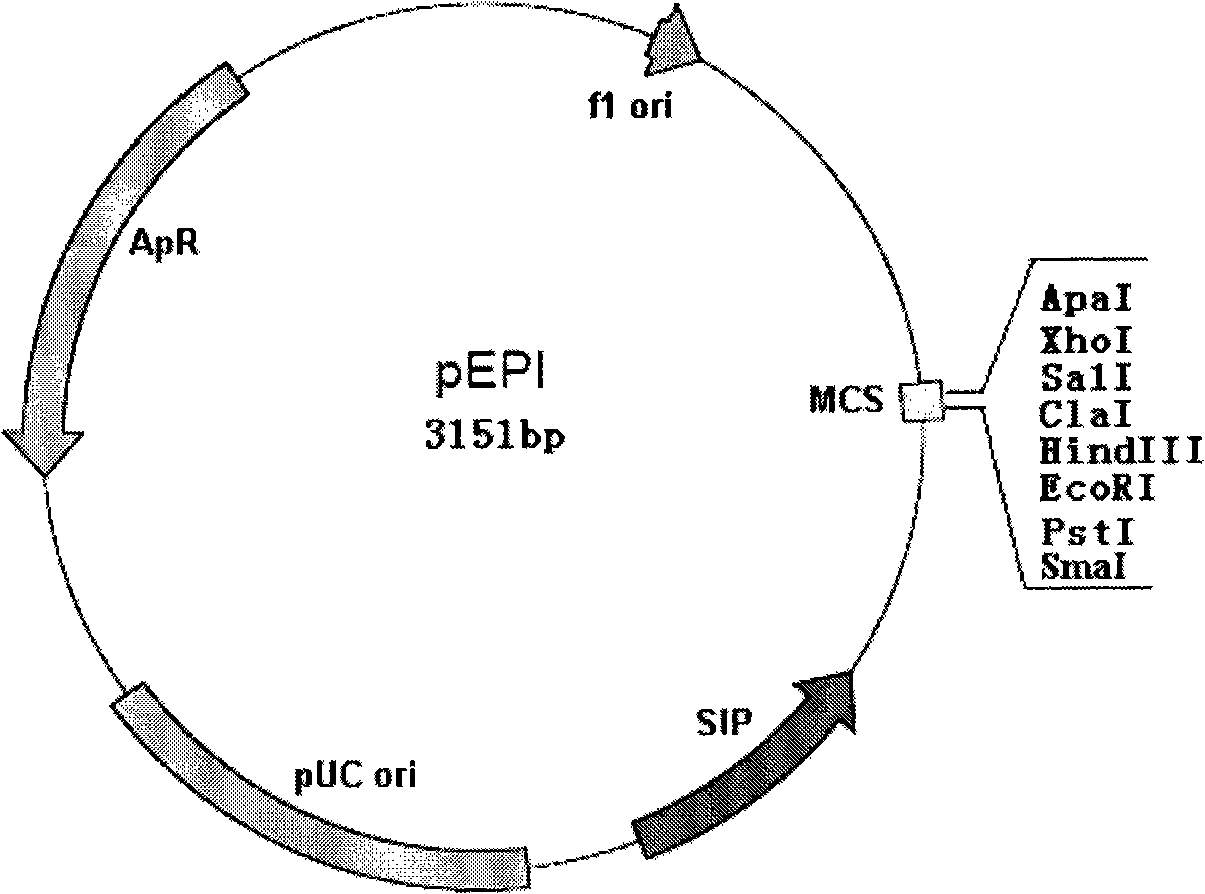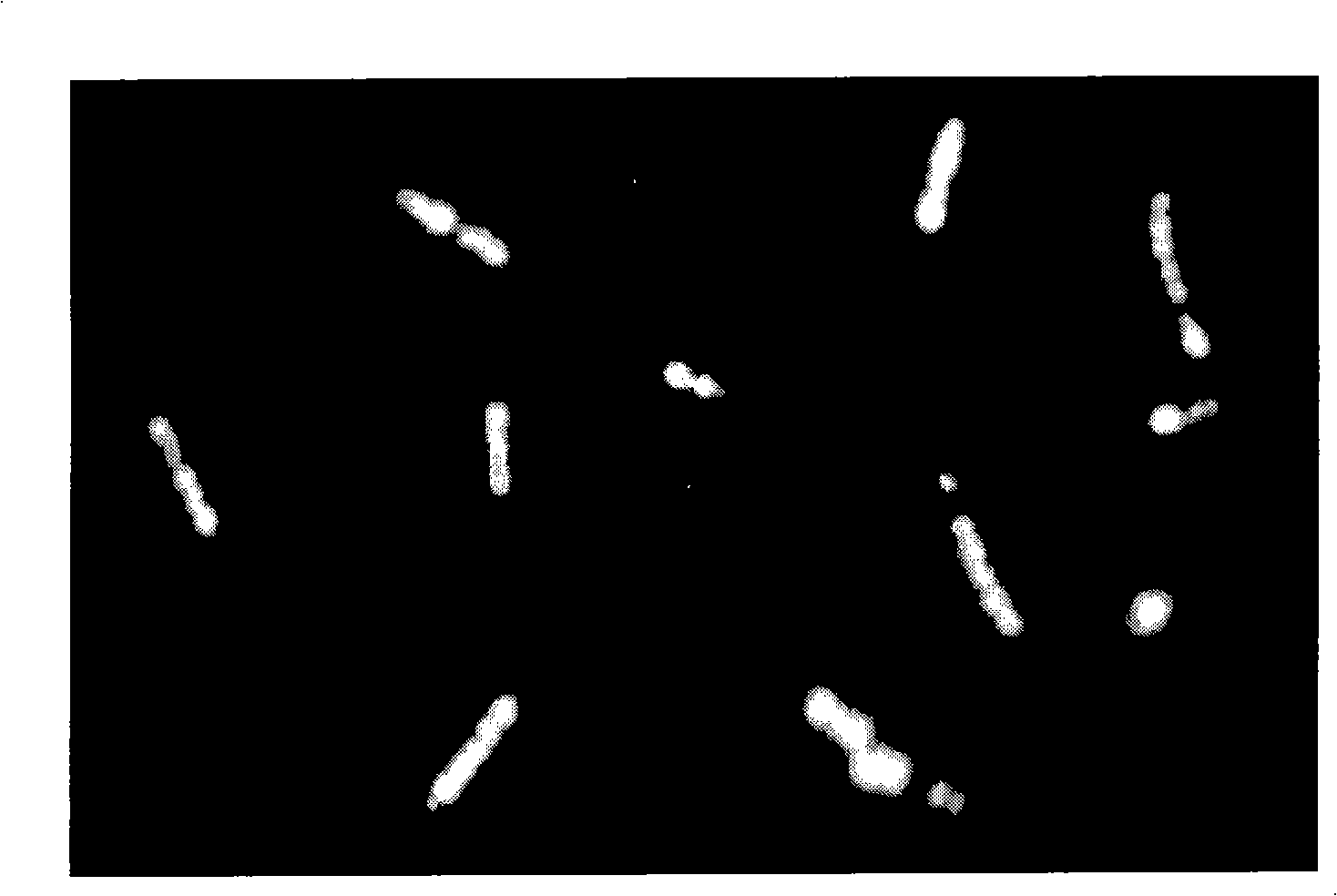Method for producing polyhydroxyalkanoate using engineering strain
A technology of polyhydroxyalkanoates and engineering strains, applied in the fields of genetic engineering and microbial fermentation
- Summary
- Abstract
- Description
- Claims
- Application Information
AI Technical Summary
Problems solved by technology
Method used
Image
Examples
Embodiment 1
[0050] Embodiment 1, construction of environment-inducible expression plasmid
[0051] 1. Extraction of Escherichia coli MG1655 genome
[0052] The genome of Escherichia coli MG1655 was extracted according to the instructions of the bacterial genome extraction kit, and detected by agarose electrophoresis. The concentration of agarose is 0.8% by mass.
[0053] 2. Cloning of Environmentally Inducible Fragment (EPI)
[0054] According to the genome sequence of Escherichia coli (2865574-2866200) published on GenBank, primers were designed
[0055] pEPI primer1:5′-AAT ACATGT CCATACGCGCTGAACGTTGGTCA-3' with
[0056] pEPI primer2: 5′-ATA CCCGGG AAGGTGGCTCCTACCCGTGATCCCT-3′
[0057] Using the extracted Escherichia coli MG1655 genome as a template, PCR (polymerase chain reaction) was used to amplify the environment-induced fragment sequence in vitro.
[0058] PCR reaction system is as follows: (primer concentration is 20 μ mol / L)
[0059] 5 μl of 10× buffer;
[0060] 25mmol / L...
Embodiment 2
[0083] Embodiment 2, the construction of PHB recombinant expression plasmid
[0084] Construction of PHB recombinant Escherichia coli:
[0085] The PHB synthase gene phbCAB was inserted into the multiple cloning site of the recombinant plasmid pEPI to construct a recombinant plasmid for expressing PHB synthase, which was named pEPI-phbCAB. The constructed recombinant plasmid expressing PHB synthase was transformed into Escherichia coli, and cultured to detect the accumulation of PHB under the regulation of the environment-induced expression system.
[0086] (1) Construction of PHB recombinant plasmid pEPI-phbCAB
[0087] According to the genome sequence of Alcaligenes eutropha published by Genbank, the primers were designed as follows:
[0088] PHB primer1: 5′-ATCCCCGGGGCGACCGGCAAAGGCGCGGCAGCTTCCA-3′
[0089] PHB primer2: 5′-ATGGAATTCCAGCCCATATGCAGGCCGCCGTTGAGC-3′
[0090] Using the genome sequence of Alcaligenes eutropha as a template, the phbCAB gene cluster was amplifie...
Embodiment 3
[0098] Embodiment 3, the construction of PHB recombinant Escherichia coli
[0099] Add the connection solution containing the recombinant environment-inducible expression plasmid pEPI to 100 μl of DH5α competent cells, mix well; put it on ice for 30 minutes; heat shock at 42°C, keep it on ice for 2 minutes, add 900 μl of LB medium, 37 °C, 100 rpm, and incubate for 1 hour. Spread the transformation solution on a solid LB medium plate containing agar with a mass volume ratio of 2.0% mass volume ratio and ampicillin with a final concentration of 100 μg / ml, and culture it statically for 16 hours at 37°C , Take a single colony to screen transformants. Pick a single colony and transfer it to LB liquid medium, and culture overnight at 37°C and 225 rpm (add ampicillin to the medium to a final concentration of 100 μg / ml). The bacteria were centrifuged, and the recombinant plasmid pEPI was extracted using a plasmid extraction kit (purchased from TIAN GEN Company), and the correctness ...
PUM
 Login to View More
Login to View More Abstract
Description
Claims
Application Information
 Login to View More
Login to View More - R&D
- Intellectual Property
- Life Sciences
- Materials
- Tech Scout
- Unparalleled Data Quality
- Higher Quality Content
- 60% Fewer Hallucinations
Browse by: Latest US Patents, China's latest patents, Technical Efficacy Thesaurus, Application Domain, Technology Topic, Popular Technical Reports.
© 2025 PatSnap. All rights reserved.Legal|Privacy policy|Modern Slavery Act Transparency Statement|Sitemap|About US| Contact US: help@patsnap.com



